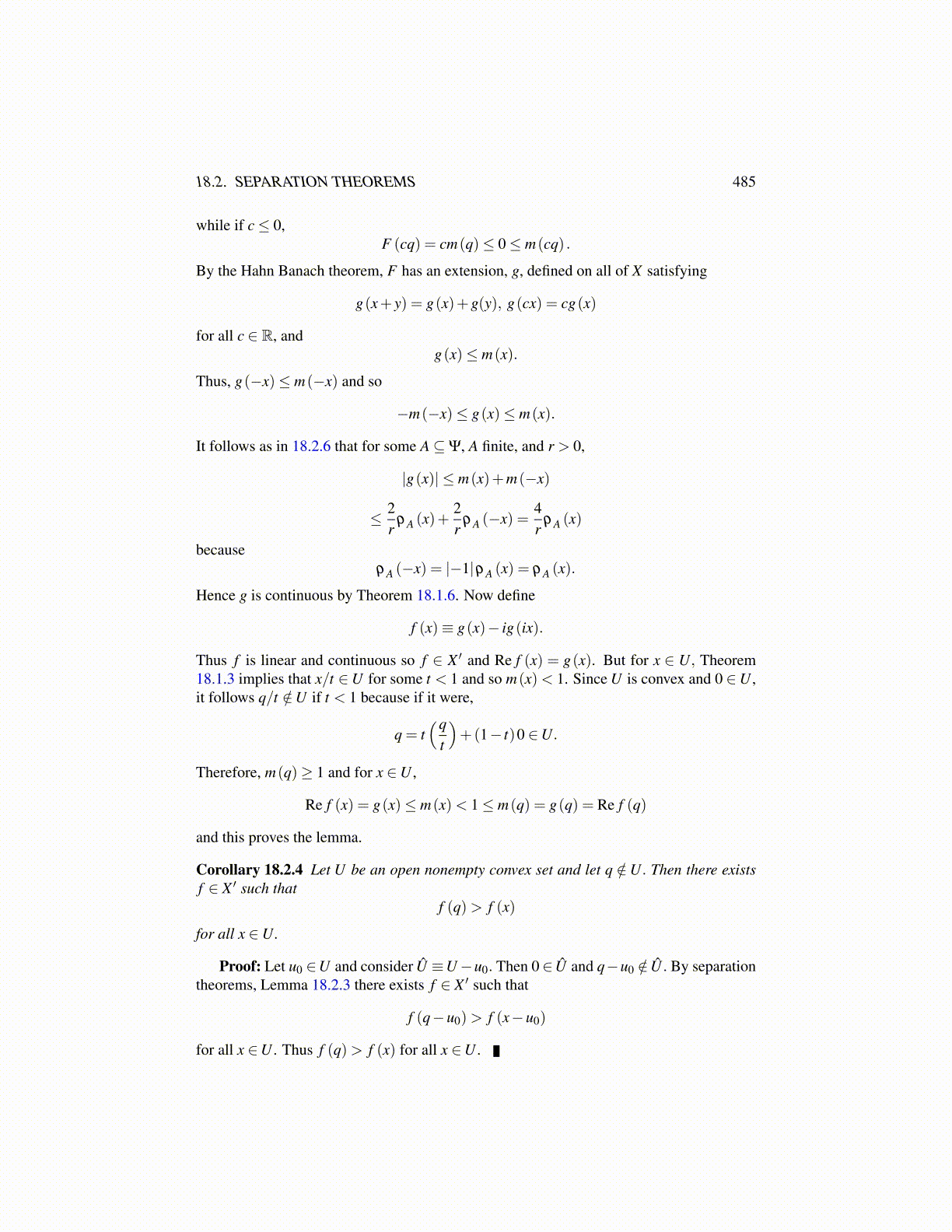
18.2. SEPARATION THEOREMS 485
while if c≤ 0,F (cq) = cm(q)≤ 0≤ m(cq) .
By the Hahn Banach theorem, F has an extension, g, defined on all of X satisfying
g(x+ y) = g(x)+g(y), g(cx) = cg(x)
for all c ∈ R, andg(x)≤ m(x).
Thus, g(−x)≤ m(−x) and so
−m(−x)≤ g(x)≤ m(x).
It follows as in 18.2.6 that for some A⊆Ψ, A finite, and r > 0,
|g(x)| ≤ m(x)+m(−x)
≤ 2r
ρA (x)+2r
ρA (−x) =4r
ρA (x)
becauseρA (−x) = |−1|ρA (x) = ρA (x).
Hence g is continuous by Theorem 18.1.6. Now define
f (x)≡ g(x)− ig(ix).
Thus f is linear and continuous so f ∈ X ′ and Re f (x) = g(x). But for x ∈ U, Theorem18.1.3 implies that x/t ∈U for some t < 1 and so m(x)< 1. Since U is convex and 0 ∈U ,it follows q/t /∈U if t < 1 because if it were,
q = t(q
t
)+(1− t)0 ∈U.
Therefore, m(q)≥ 1 and for x ∈U ,
Re f (x) = g(x)≤ m(x)< 1≤ m(q) = g(q) = Re f (q)
and this proves the lemma.
Corollary 18.2.4 Let U be an open nonempty convex set and let q /∈U. Then there existsf ∈ X ′ such that
f (q)> f (x)
for all x ∈U.
Proof: Let u0 ∈U and consider Û ≡U−u0. Then 0∈ Û and q−u0 /∈ Û . By separationtheorems, Lemma 18.2.3 there exists f ∈ X ′ such that
f (q−u0)> f (x−u0)
for all x ∈U . Thus f (q)> f (x) for all x ∈U .